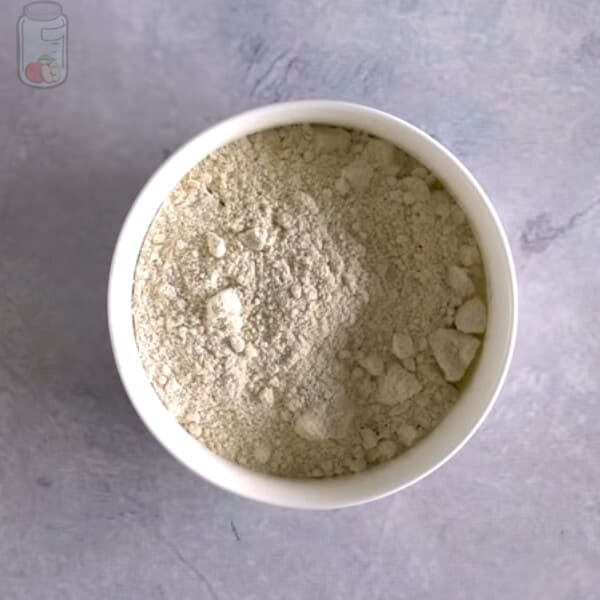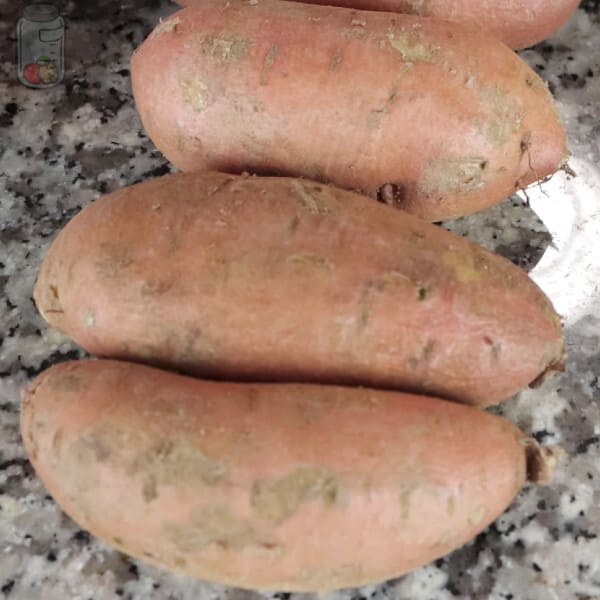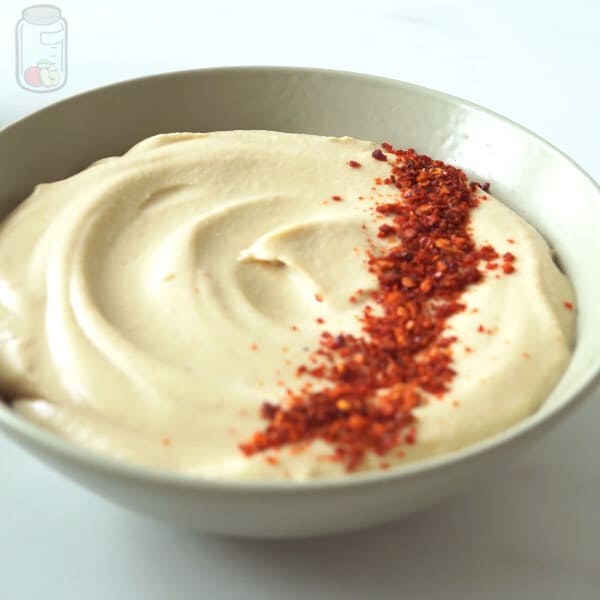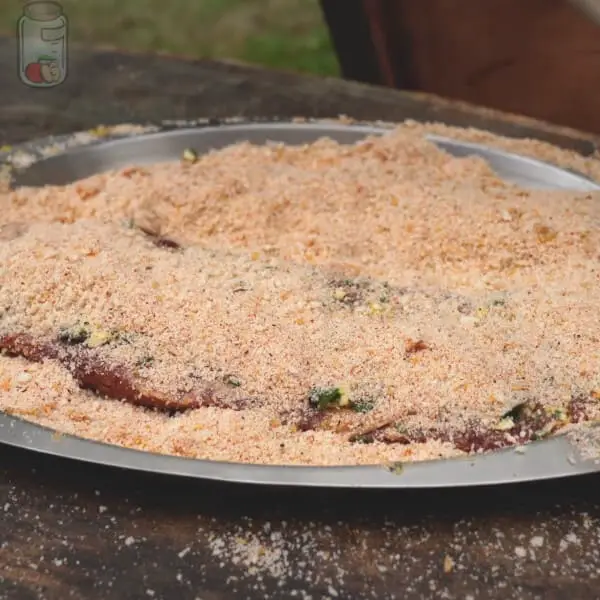Garlic is one of the essential ingredients in the kitchen since it serves for an infinity of recipes that goes from a dish to a sauce or dressing, and honestly, I love garlic. So follow me on this journey about how to keep garlic for months.
You can leave the garlic at room temperature for 1 or 2 months. Refrigerating the whole garlic is not a good option since it begins to germinate, but chopped will last 3 to 5 days in the fridge. You can also freeze the garlic for 6 to 9 months.

To know how to store garlic correctly, the first thing you have to know is how to choose them so that they will last longer.
How to select garlic
First, start by selecting the garlic well. Garlic can come in different sizes, but they are divided into hard neck garlic and soft neck garlic, which is not to say that some are softer than others but instead refers to the consistency of the stem.
Therefore, choose garlic trees that are firm to the touch and do not have areas where the garlic clove can be seen or have mold. Do not choose those that have a stem or are very wrinkled because it is a sign that they are not very fresh.
You should know that hard-stemmed garlic usually has more prominent teeth but in less quantity, while soft-stemmed garlic is generally smaller and with many more teeth.
How to store garlic at room temperature
Garlic is an ingredient that needs to breathe. Therefore, don’t use airtight containers that prevent the air from circulating freely; otherwise, it rots quickly, or mold develops quickly.
So when storing garlic heads at room temperature, you must apply these tips:
- Step 1: Use a basket or mesh.
Put your garlic in a basket or mesh bag to allow air circulation so it can breathe easily.
- Step 2: Tag.
If you bought a good amount of garlic, you would find it convenient to write down the date of storage of the garlic.
- Step 3: Store the garlic in a dark place.
Keep garlic away from sunlight and store it in a cool, moisture-free place. If the temperature is about 68°F – 86°F (20°C-30°C), the garlic will last you from 1 to 2 months.
On the other hand, if you place the garlic in a place where the temperature is about 60°F (16°C), you can keep it for 3 to 5 months.
If you peeled the garlic, do NOT leave it at room temperature for too long.
How to keep garlic in the fridge
I do not recommend fridge storage since the refrigerator is a humid environment that causes the germination of garlic. And although this does not harm it, it considerably shortens its shelf life.
On the other hand, if you peel and chop garlic cloves, you must refrigerate them and do not leave them for more than two hours at room temperature.
To store the unpeeled garlic in the fridge, you have to put them inside a paper bag, a standard plastic bag (without tying), a container with a lid (not airtight), or in the drawer of vegetables.
This way, you can refrigerate the garlic for 1 to 2 weeks; after this time, it will begin to rot. [1]
If you want to know how to preserve chopped or peeled garlic, you have to put it inside an airtight container (preferably glass) or an airtight bag.
Place the ball or container with peeled and chopped garlic in the coldest part of the refrigerator to keep it in good condition for 3 to 5 days.
How to freeze garlic
Can garlic be frozen? Yes, garlic freezes very well, and it does not matter if you have the whole, peeled, or chopped garlic since it works in all those cases.
Freeze unpeeled garlic heads or cloves
You can freeze whole heads of garlic, or unpeeled cloves, as follows:
- Step 1: Bag the head or cloves of garlic.
Place the head or clove of unpeeled garlic in a freezer bag with hermetic closure, although you could also use a cold-resistant and airtight vase.
- Step 2: Tag.
Write the date of garlic storage on the bag or put a label with this information on the container.
- Step 3: Save the garlic head in the freezer.
Whole garlic head or unpeeled garlic cloves may be in the freezer for 6 to 9 months.
Freeze peeled garlic cloves
Another much more practical way is peeling the garlic before freezing.
- Step 1: Peel the garlic.
Use the most straightforward way to peel the garlic, but try not to crush them.
- Step 2: Freeze for an hour or two.
On a tray, place parchment paper, waxed or a nonstick sheet, then arrange the garlic cloves leaving space between them, and freeze for an hour or two.
- Step 3: Bag the garlic cloves.
Once the garlic cloves are frozen, pass them to an airtight bag or airtight container freezer-resistant.
- Step 4: Tag.
Write the date of garlic storage in the bag or place a label on the container with that information.
- Step 5: Store the peeled garlic cloves in the freezer.
In this way, peeled garlic cloves can also last frozen for 6 to 9 months.
Freeze chopped garlic
- Step 1: Peel and chop the garlic.
Peel the garlic, and this time you can crush them, then chop them into slices or squares.
- Step 2: Bag.
Place the chopped garlic inside an airtight bag that resists the freezer.
- Step 3: Tag.
Write the date of storage of the garlic on the bag.
- Step 4: Store the chopped garlic in the freezer.
Similarly, you may freeze chopped garlic for approximately 6 to 9 months. [2]
How to preserve garlic in oil
You can use this method to add garlic flavor to the oil. However, you must be very careful when storing it, or you run the risk of garlic developing the bacterium Clostridium botulinum, which causes botulism.
Nevertheless, if you consider all the advice and warnings I give you, you will not run any risk.
- Step 1: Sterilize the containers.
If you plan to store garlic in oil in the fridge, use glass containers with a screw cap or airtight, and if you are going to freeze it use cold-resistant plastic containers.
But it would be best if you sterilize them first. So, put the jars inside a pot with hot water for 15 minutes and about 10 minutes for plastic containers. Then leave them on a rack to drain and dry.
- Step 2: Peel the garlic.
Crush and peel the garlic. You can leave it whole or chop it in half or slices.
- Step 3: Place the garlic in the containers.
Pour in the garlic and then cover it entirely in oil (preferably olive oil). You can add some other seasoning, such as peppercorns or bay leaves.
- Step 4: Tag.
Stick a label with the garlic’s storage date and/or possible expiration date in oil.
- Step 5: Store the garlic in oil.
You can store garlic in oil in the fridge for no more than four days. However, if you want to keep it in the freezer, you must use the plastic container, and you will be able to freeze the garlic in oil for 10 to 12 months.
How to preserve garlic in vinegar
Vinegar is an excellent preservative for the garlic because it provides such an acidic environment that prevents the appearance and development of Clostridium botulinum.
Although it adds a slightly acidic flavor to garlic, combining it with some spices can considerably improve its flavor, and you can use vinegar to flavor different recipes.
You can use white or red vinegar; however, I do not advise using balsamic vinegar because it has such a robust flavor that it would completely overshadow garlic flavor.
To preserve garlic in vinegar, you have to follow these steps:
- Step 1: Sterilize the glass containers.
I advise using glass containers with a screw cap or hermetic to store the garlic in vinegar. But first, you need to clean them and then sterilize them.
Boil water in a pot and put the glass jars next to their respective lids in the water for 15 minutes. Then take them out and place them on a rack, so they will drain and eventually dry.
- Step 2: Peel the garlic.
When you peel the garlic, take care not to crush it; otherwise, it will absorb a lot of vinegar, and its taste will change a lot.
- Step 3: Pack the garlic.
When the containers are completely dry, fill them with garlic cloves. You can add the species you prefer to the garlic, such as peppercorns, bay leaves, chili seeds, etc.
Then add the vinegar until the garlic is completely covered with it. And close the container tightly.
- Step 4: Tag.
Stick a label with the pickled garlic’s storage date and possible expiration date.
- Step 5: Store the containers with garlic in vinegar.
Please put them in the coldest part of your refrigerator. This way, the garlic in vinegar can be refrigerated for approximately four months.
How to dehydrate garlic
Another alternative to preserving garlic long-term is to dehydrate or dry it, which is a good strategy if you do not want to use the fridge (you can store the dried garlic in the fridge too).
To dehydrate garlic, follow these steps:
- Step 1: Peel and chop the garlic.
Separate the garlic cloves and then peel them. Then you can chop it in half or somewhat thinner slices or leave them whole, although they will take longer to dry.
- Step 2: Prepare the tray.
If you use your oven to dehydrate the garlic, you should put them on a tray with parchment paper or a nonstick sheet.
- Step 3: Dehydrate.
First, set the dehydrator to 140°F (60°C). Next, put the garlic cloves in the tray, leaving spaces between them, and let it sit there for 2 hours. After that, lower the temperature to 130°F (55°C) and let it dry for 4 or 6 more hours.
If you are going to use the oven, put it at the lowest temperature you can, put the tray and cook for 2 hours.
Garlic will be dehydrated when it is hard and brittle. However, if the garlic is still flexible, it must dry more.
- Step 4: Pack or bag the garlic.
Please wait for the garlic to cool before putting it in a container. Then, if you want to prepare garlic powder, blend the dehydrated garlic until you get the powdery texture you want, and add salt.
Once the dehydrated garlic is cold, put it inside an airtight container or bag.
- Step 5: Tag.
Paste or write down the date of storage of the dehydrated garlic in the container or bag.
- Step 6: Store the dehydrated garlic.
You have two storage options. First, you can store the dried garlic at room temperature for one year if the pantry or cupboard is cool and dark.
You can also freeze dehydrated garlic. As long as you put it in a freezer-resistant container, dehydrated garlic can be kept frozen for 18 to 24 months.
How to preserve garlic paste
You can prepare a garlic paste with two oil parts for each part of garlic. Anyways, to store it, you have to:
- Step 1: Transfer the garlic paste to an airtight container.
You can use an airtight bag (but be sure to take out all the air before closing it) or an airtight container.
If you are going to freeze it, you can also put them in ice cube molds, freeze them and then transfer the frozen pasta cubes to an airtight bag.
- Step 2: Tag.
If you are going to freeze it, you should put the storage date or possible expiration.
- Step 3: Save the garlic paste.
The garlic paste will only last four days if stored in the fridge, but frozen can last from 6 to 9 months.
How to preserve commercial garlic (ground or canned)
You can find jars of garlic chopped in oil or containers with garlic powder in supermarkets or food stores. These turn out to be extremely simple to save.
In the case of canned garlic, you can store it at room temperature for 12 to 18 months, depending on the heat where you live.
But once opened, you should refrigerate them for about eight months. [3]
On the other side, you can keep the industrial garlic powder in good condition until the expiration date indicated by the manufacturer, regardless of whether it is open or closed.
You must keep it well-covered and store it in a moisture-free, cool, dark place in the pantry or cupboard.
How to preserve ground garlic
Ground garlic can be considered as crushed or chopped garlic, and with that in mind, you can keep it refrigerated, frozen, or dehydrated; for this, you must follow the storage guidelines for each case.
So, considering your preferences, you can choose the method you want in the previous sections.
How do you know if garlic is spoiled?
First, you must check that it does not have mold, so if you see lint or black or white spots on the garlic or in the container, discard it because it was contaminated and is no longer safe to ingest.
Also, the garlic cloves should have a stiff consistency, so those that are very soft and wet (do not count those that are submerged in vinegar or oil) is because they have already lost freshness, and if they are not bad, soon they will be.
Garlic has a very peculiar smell, so if they suddenly acquire a sour smell and are different from the usual, throw it away.
Why does garlic spoil?
Garlic is a food with a low amount of acid, so microorganisms develop in them exceptionally quickly. Therefore, they will be quickly contaminated if they do not have a suitable storage environment.
You also have to consider all foods’ natural decomposition process, so as time goes by, they will age and rot.
In addition, garlic is prone to produce Clostridium botulinum, an organism that produces botulism in people. So you
have to be careful not to leave too much time at room temperature the peeled garlic, especially if it is chopped or crushed.
How long does garlic last?
| Product | Duration |
| Garlic at room temperature (60°F -15°C) | 3 – 5 months |
| Garlic at room temperature (25°C – 77°F) | 1 – 2 months |
| Whole garlic in the fridge | 1 – 2 weeks |
| Peeled/chopped garlic in the fridge | 3 – 5 days |
| Frozen garlic | 6 – 9 months |
| Garlic in oil (refrigerated) | 4 days |
| Garlic in oil (frozen) | 10 – 12 months |
| Garlic in vinegar | 4 months |
| Dehydrated garlic at room temperature | 1 year |
| Dehydrated garlic in the freezer | 18 – 24 months |
| Garlic paste in the fridge | 4 days |
| Garlic paste in the freezer | 6 – 9 months |
| Industrial canned garlic at room temperature (sealed) | 12 – 18 months |
| Industrial canned garlic in the fridge (opened) | 8 months |
| Industrial canned garlic in the fridge (sealed) | Until the expiration date |
| Industrial garlic powder at room temperature | Until the expiration date |
What is the best way to preserve garlic?
It is hard to say which method is the best since there are many ways to store garlic, but I will suggest two.
If you don’t have much garlic, just store it at room temperature, but I would dehydrate it if you have a lot.
If you want to learn how to preserve some other product, feel free to explore everything you like. Here I have the most varied and complete list of topics that deal with food preservation.
[1] https://foodbanksbc.org/wp-content/uploads/2014/12/Food-Storage-Guidelines3.pdf
[2] https://escholarship.org/uc/item/8m47003z
[3] https://lee.ces.ncsu.edu/wp-content/uploads/2012/12/TheFoodKeeper.pdf?fwd=no






